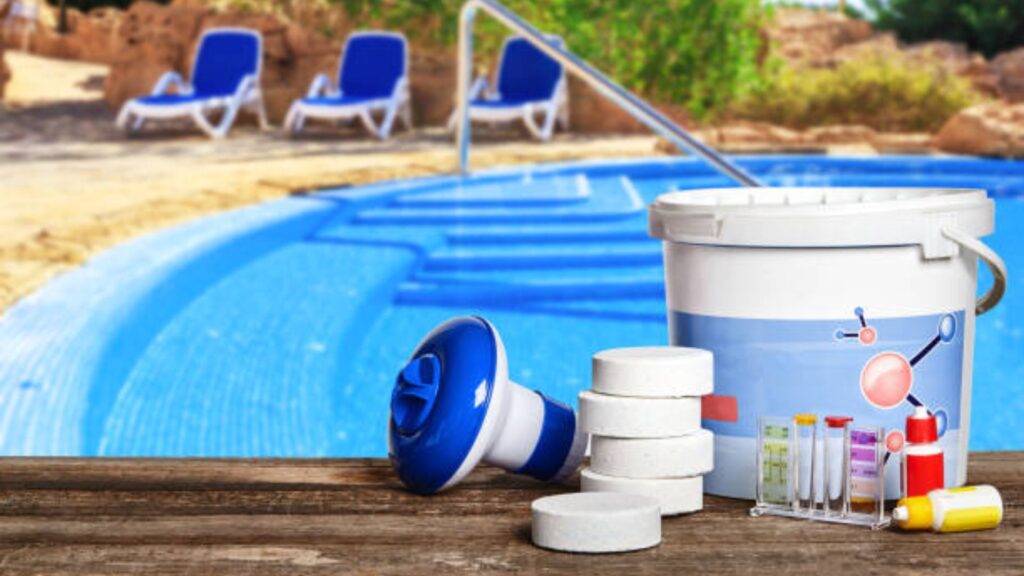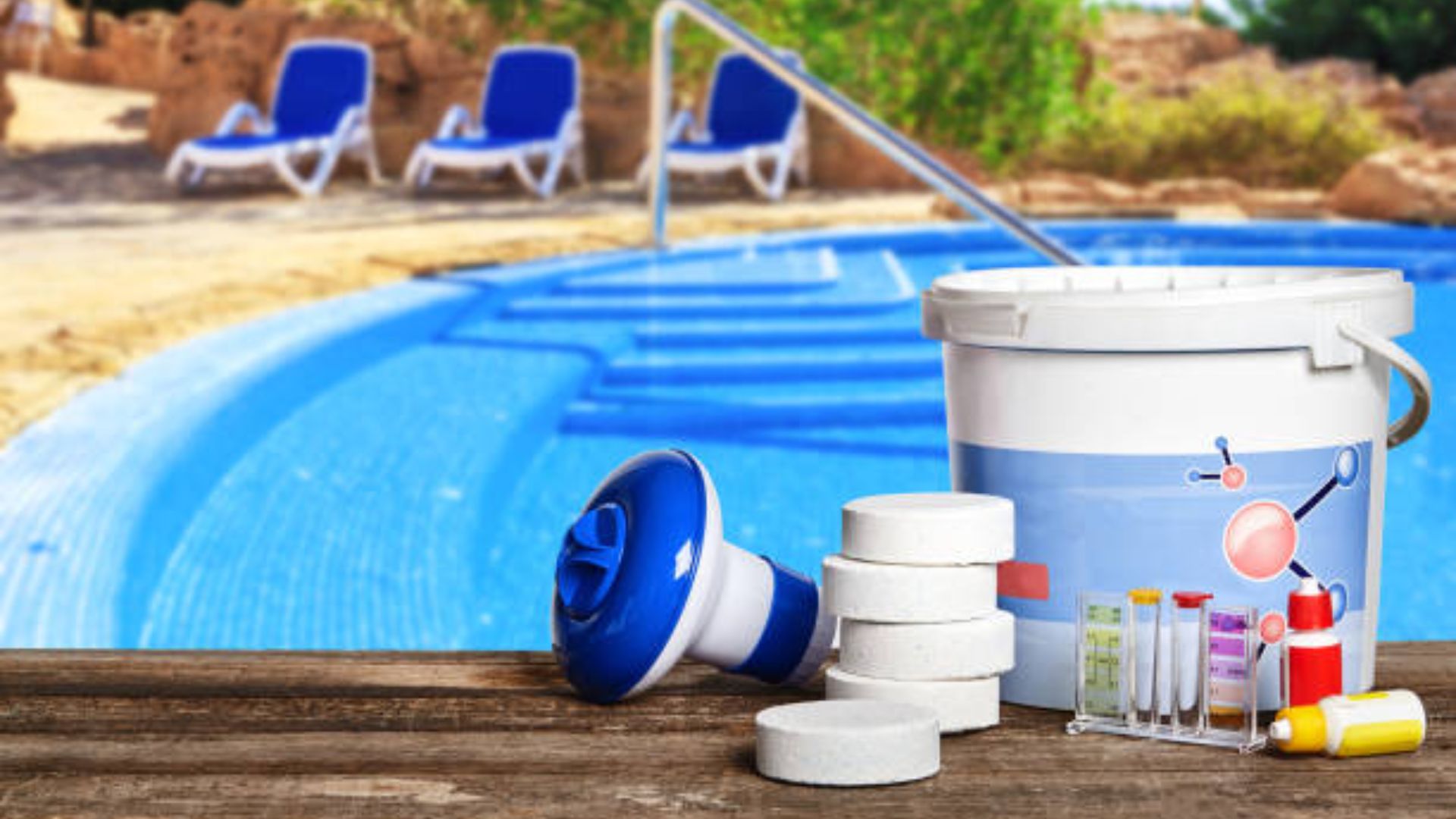
Prevent Pool Problems: The Critical Importance of Maintaining Free Chlorine Levels
The shimmering allure of a pristine swimming pool is a summertime staple. But beneath the surface of that inviting water lurks a constant battle against contaminants. From bacteria and algae to viruses and organic matter, a pool is a breeding ground for potential health hazards. The key to maintaining a safe and enjoyable swimming experience lies in a single, crucial element: free chlorine. This article delves into the science behind free chlorine, its vital role in pool sanitation, and how you can proactively prevent pool problems by ensuring optimal levels.
Understanding Free Chlorine: Your Pool’s First Line of Defense
Free chlorine is the active form of chlorine in your pool water. It’s the chlorine that’s available to kill germs and algae. It’s what keeps your pool safe and sparkling. When you add chlorine to your pool, it reacts with water to form hypochlorous acid (HOCl) and hypochlorite ion (OCl-). HOCl is the most effective form of chlorine for sanitizing, and its presence is directly linked to the health of your pool.
Think of free chlorine as the vigilant lifeguard constantly patrolling your pool, eliminating threats before they can cause harm. Without adequate free chlorine, your pool becomes vulnerable to a host of problems, ranging from cloudy water and unpleasant odors to the growth of harmful bacteria and algae blooms. Maintaining the correct free chlorine level is not just about aesthetics; it’s about public health and the enjoyment of a safe swimming environment. The ideal range for free chlorine in a swimming pool is generally between 1 and 3 parts per million (ppm). Regularly testing your pool water and adjusting chlorine levels accordingly is paramount to prevent pool problems.
The Threats Free Chlorine Fights: A Deep Dive into Pool Contaminants
A swimming pool is a dynamic ecosystem, constantly interacting with its environment. Swimmers, the elements, and the surrounding landscape all contribute to the introduction of contaminants. Understanding these threats is crucial for appreciating the importance of free chlorine.
- Bacteria: Bacteria, such as E. coli and other pathogens, can enter your pool through swimmers, rainwater, and even wind. These bacteria can cause illnesses, making free chlorine a critical defense against waterborne infections.
- Viruses: Viruses, including those responsible for gastroenteritis and other illnesses, can also thrive in pool water. Free chlorine effectively neutralizes viruses, protecting swimmers from potential health risks.
- Algae: Algae are microscopic plants that can quickly multiply in pool water, leading to unsightly green or cloudy conditions. Algae blooms can also create a breeding ground for bacteria. Free chlorine acts as an algaecide, preventing and eliminating algae growth.
- Organic Matter: Organic matter, such as sweat, urine, lotions, and leaves, introduces contaminants that consume chlorine and reduce its effectiveness. Proper filtration and free chlorine levels are essential to break down these organic materials.
By consistently maintaining adequate free chlorine levels, you significantly reduce the risk of these contaminants thriving in your pool. This proactive approach is essential to prevent pool problems and ensure a healthy and enjoyable swimming experience.
The Consequences of Insufficient Free Chlorine: A Cascade of Pool Problems
Neglecting free chlorine levels can lead to a range of undesirable consequences, transforming your pristine pool into a source of frustration and potential health hazards. Understanding these consequences underscores the critical importance of proactive pool maintenance.
- Cloudy Water: One of the first signs of low free chlorine is often cloudy or murky water. This is a result of bacteria, algae, and other contaminants multiplying in the water.
- Algae Blooms: Without sufficient free chlorine, algae can rapidly flourish, turning your pool green and unsightly. Algae blooms can also clog filters and create an unpleasant swimming experience.
- Unpleasant Odors: The presence of chloramines, formed when chlorine reacts with contaminants, can produce a strong chlorine smell. This is a sign of insufficient free chlorine and a buildup of contaminants.
- Skin and Eye Irritation: Low free chlorine levels can lead to skin and eye irritation, making swimming uncomfortable and potentially harmful.
- Health Risks: Insufficient sanitation increases the risk of contracting waterborne illnesses, such as diarrhea, skin rashes, and other infections.
- Equipment Damage: Algae and other contaminants can clog filters and damage pool equipment, leading to costly repairs.
Ignoring these warning signs can quickly escalate into a full-blown pool problem, requiring extensive treatment and potentially rendering your pool unusable for an extended period. Regular monitoring and maintenance of free chlorine are vital to prevent these issues.
Maintaining Optimal Free Chlorine Levels: A Practical Guide
Maintaining the correct free chlorine level is not a complex task, but it does require diligence and consistency. Here’s a step-by-step guide to help you keep your pool water sparkling and safe:
- Test Your Water Regularly: Invest in a reliable pool water testing kit (liquid or test strips). Test your pool water at least twice a week, and more frequently during periods of heavy use or after heavy rainfall. Testing your pool water is the first step to prevent pool problems.
- Understand Your Test Results: Familiarize yourself with the ideal ranges for free chlorine (1-3 ppm), pH (7.2-7.8), and other chemical levels.
- Adjust Chlorine Levels as Needed: Based on your test results, add chlorine to your pool to maintain the recommended free chlorine level. Common chlorine sources include chlorine tablets, granules, and liquid chlorine.
- Shock Your Pool Periodically: Shocking your pool involves adding a large dose of chlorine to kill bacteria, algae, and other contaminants. Shock your pool weekly, or more often if needed, especially after heavy use or heavy rainfall. This helps to boost free chlorine levels and prevent pool problems.
- Maintain Proper pH Levels: The pH of your pool water affects the effectiveness of chlorine. Maintain a pH level between 7.2 and 7.8 for optimal chlorine performance.
- Circulate and Filter Your Water: Ensure your pool pump and filter are running for the recommended amount of time each day to circulate the water and remove debris. This will reduce the load on your free chlorine.
- Clean Your Pool Regularly: Skim the surface of your pool to remove leaves and debris, vacuum the pool floor, and clean the skimmer baskets to remove organic matter that can consume chlorine.
By following these simple steps, you can proactively manage your pool’s free chlorine level and significantly reduce the risk of pool problems.
Troubleshooting Common Chlorine Issues
Even with diligent maintenance, you may occasionally encounter issues with your free chlorine levels. Here are some common problems and their solutions:
- Low Free Chlorine: Add more chlorine to your pool. Shock your pool if the levels are extremely low or if there are signs of algae growth.
- High Free Chlorine: This is less common, but if your free chlorine levels are too high, allow the chlorine to dissipate naturally by running your pump and filter. You can also use a chlorine neutralizer.
- Chloramine Buildup: Chloramines are formed when chlorine reacts with contaminants. Shock your pool to break down chloramines.
- Cloudy Water: Test your water to determine the cause of the cloudiness. Adjust your chlorine and pH levels accordingly. You may also need to shock your pool or use a clarifier.
- Algae Growth: Shock your pool and use an algaecide to kill algae. Brush the pool walls and floor to remove algae.
If you are unsure how to address a specific issue, consult a pool professional for assistance. They can provide expert advice and help you resolve your pool problems.
The Science Behind the Recommendation
The recommended free chlorine range (1-3 ppm) is based on scientific research and industry best practices. This range provides a balance between effective sanitation and swimmer comfort. Levels below 1 ppm may not be sufficient to kill all contaminants, while levels above 3 ppm can cause skin and eye irritation.
The effectiveness of chlorine is also affected by pH levels. Chlorine is most effective at a pH between 7.2 and 7.8. Maintaining the correct pH level ensures that the chlorine is in its most effective form (HOCl).
The frequency of testing and chlorine additions should be adjusted based on the pool’s use, the weather conditions, and the presence of contaminants. Regular monitoring allows you to proactively adjust your chlorine levels to maintain optimal sanitation and prevent pool problems.
Conclusion: Proactive Prevention is Key
Maintaining proper free chlorine levels is not just about aesthetics; it is a critical component of responsible pool ownership. By understanding the role of free chlorine, the threats it combats, and the practical steps to maintain optimal levels, you can proactively prevent pool problems and ensure a safe and enjoyable swimming experience for yourself, your family, and your guests. Regular testing, consistent adjustments, and a proactive approach to pool maintenance are the keys to a healthy and sparkling pool. Prioritizing free chlorine will help you to prevent pool problems and enjoy your pool to the fullest.
[See also: Related Article Titles]


